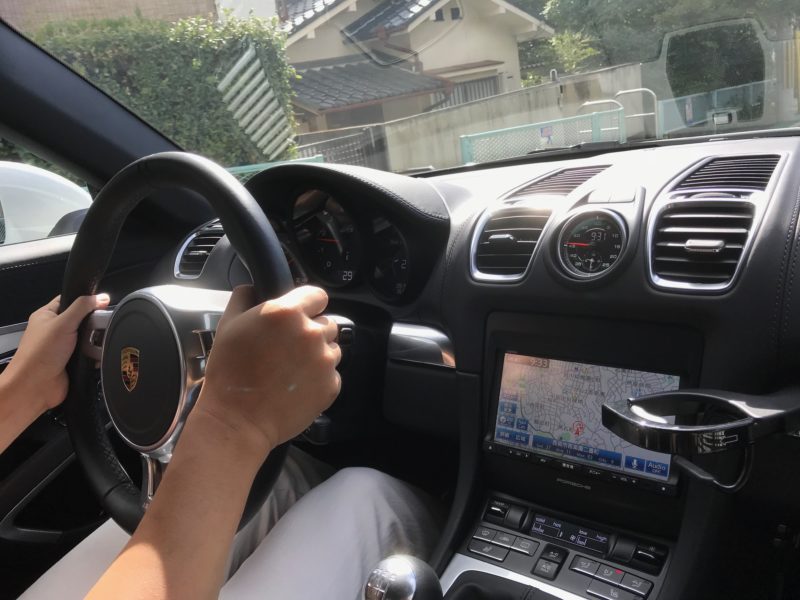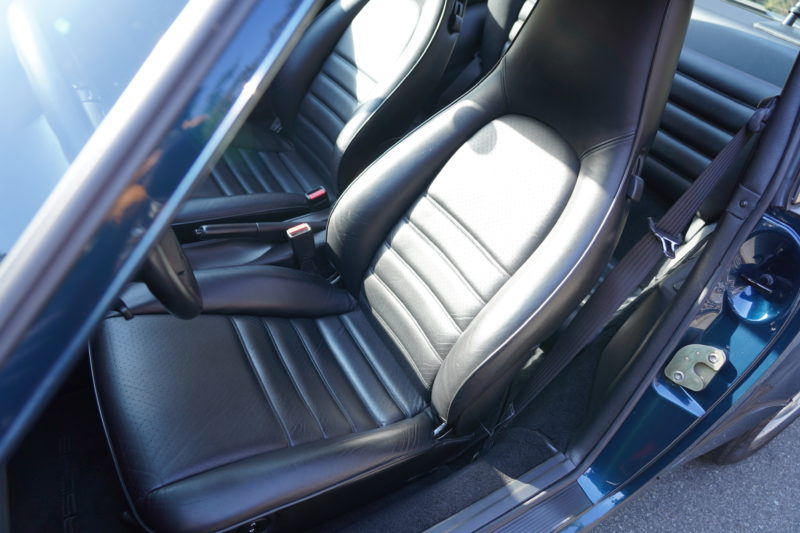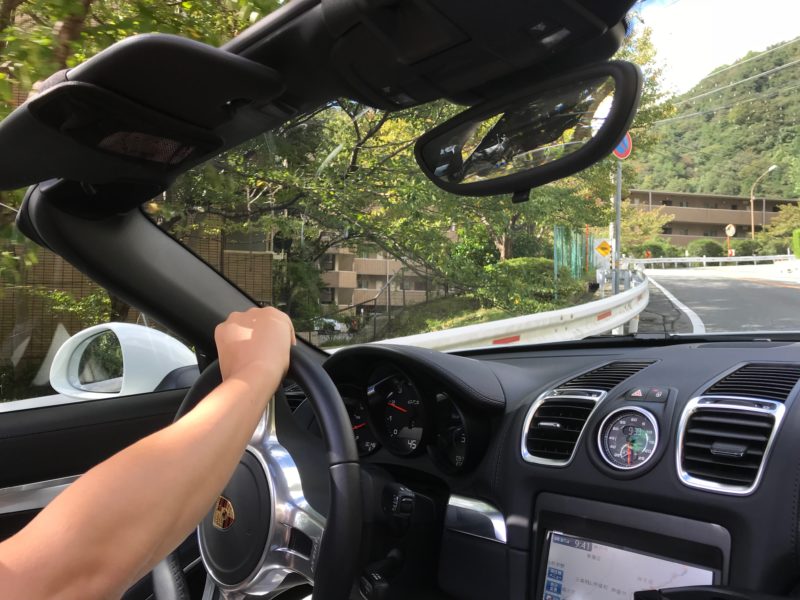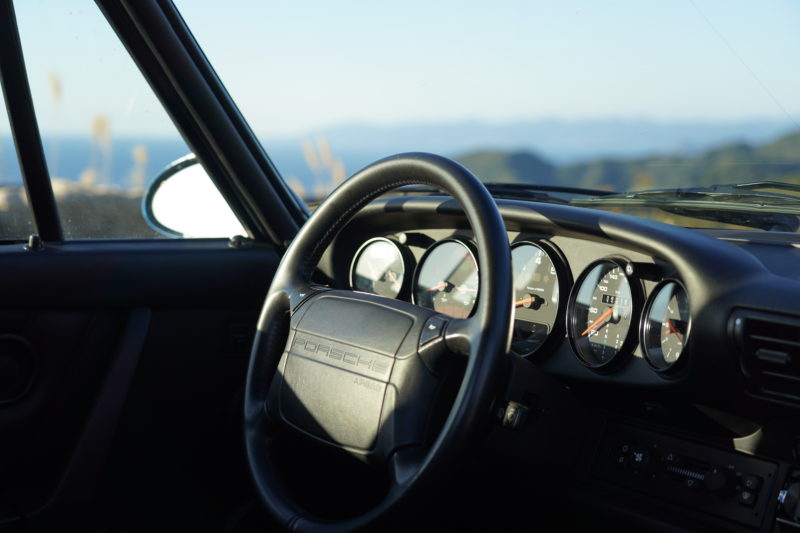Back Pain Solutions for Driving Enthusiasts – Tips for Office Chairs, Seat Positioning, and More
公開日:2019.03.10

Comments on Back Pain Solutions
The other day, I wrote an article titled “My husband loves driving but suffers from back pain—if anyone has recommended solutions, please share,” and received many comments. Thank you all so much. Among them, some doctors specializing in back pain treatment even took the time to email me… while writing this Porsche blog, I realized that “a nationwide network of top specialists had naturally formed” (laughs).

Four Key Back Pain Solutions
Reading through your comments, I found that back pain solutions for driving enthusiasts generally fall into four categories.
1. Adjusting Your Office Chair
“Sitting in an uncomfortable posture for long periods” puts a heavy strain on your back. So, making adjustments to the office chair you use is a very important countermeasure. Often, office chairs are provided by the company and budgets are limited, so many chairs don’t prioritize reducing back strain.
That’s why I learned that making adjustments and improvements within your own control is crucial, especially for those who spend long hours sitting at work.

Speaking of which, when I was a saleswoman, I also felt that the company chair was uncomfortable. Luckily, my desk was by the window with no one behind me, so I often sat cross-legged on the chair while wearing pantsuits year-round.
At first, I would sit properly whenever someone passed behind me, but eventually I got so used to sitting cross-legged that I didn’t care who walked by—until one day my boss happened to see me and said,
“Hey, you’re a woman after all, that’s not okay! (゚д゚)!”
I remember that well. (Totally irrelevant story, I know.)
Back to the topic, here’s a comment from a reader:
I developed back pain because the chair I was assigned at work didn’t fit me. It was uncomfortable and I couldn’t stay in the same position for long. So, I reluctantly bought a memory foam cushion on Amazon. The cushion was quite thick, and sitting on it stabilized my hips and supported my tailbone area.
Since the cause of my back pain was clear, after using it for a while, my back pain improved. The chair hasn’t changed, so I continue to use this memory foam cushion at work.
If the chair doesn’t fit, sometimes I place a thin cushion or folded towel under my thighs or put a footrest to raise my legs. At the same time, I consciously try to increase the natural forward curve of my lumbar spine and place a cushion behind my back, which helped ease symptoms. Although it might feel tough at first, this posture reduces strain on the back.
2. Adjusting Your Driving Seat and Using Seat Cushions
When driving an automatic transmission (AT) car for long periods, you tend to stay in the same posture more than with a manual transmission (MT) car, which can put more strain on your back. My husband actually said,
“When I went on long tours in the Boxster, my back never hurt, but since I started long tours in the air-cooled car, my back started hurting.”
(Is it really the AT, or just the air-cooled seat issue…?)

To ease back pain while driving, some people use cushions on their seats or prioritize seat comfort when choosing a car.
During the time my back hurt, I used a memory foam cushion in my Porsche. It did look a bit awkward—black cushion on beige seats made it stand out. When I got back to the car at service areas and opened the door, I felt embarrassed and a bit discouraged.
But comfort comes first. It stabilized my sitting position and gave me a slight sense of support. Most importantly, it made sitting more comfortable, so it was effective.
Among the cars I’ve driven, the Integra Type R (DB8) with its standard Recaro seats felt the least likely to cause back pain. Although it had manual adjustments and no lumbar support, I drove it for 170,000 km without any trouble.
3. Adjusting Your Seat Position
Especially for long drives, it’s important to properly adjust your seat position. Porsche even officially explained the importance of seat positioning in a YouTube video.
This video focused on how driving in the correct position helps you fully unleash your car’s performance, but naturally, it would also reduce strain on your back.

That said, I believe you have to find the seat position that suits your posture and body shape through your own feel. Even now, I’m not sure if my current seat position is the best.
A reader shared:
On long highway drives, to avoid staying in the same posture for too long, I consciously shift my upper body (hip area) slightly to the right or left. Since I’m slim, I also move slightly forward and backward to change the pressure points and avoid hip pain.
I set my seat so my thighs are slightly raised when viewed from the side, and make sure my back and hips are firmly against the seatback. Using lumbar support to push my lower back forward about a fist’s width feels comfortable. If the seat is too low or the distance to the pedals too long, your thighs drop and that might cause back pain.
I once mistakenly placed the support on my hips, but moving it up to my lower back made a huge difference (laughs).
I think the key to seat position is the angle of the pelvis. If the seat cushion tilts too much forward, the seatback angle feels too reclined and uncomfortable. This causes a hunched posture, the steering wheel feels far away, and the headrest fit is poor (too much gap). It might feel okay at first, but after a long time it becomes unbearable and can cause numbness all over.
To fix this, I kept the seatback angle but made the seat cushion more level to reduce hunching and adjusted the headrest gap. When I readjusted to avoid gaps near my lower back (around the hips) when pressing the brake, the weird twisting feeling between my back and seat disappeared.
4. Stretching and Strength Training
Personally, I think this is the most important. If your muscles can support your body in the correct position, your back won’t be strained unnecessarily.

Over a year ago, I hurt my back after carrying my youngest daughter on my back with a baby carrier while holding my eldest daughter. At that time, I hadn’t exercised much postpartum and, embarrassingly, couldn’t do a single sit-up.
After realizing this was serious, I started doing abdominal exercises using a smartphone app and resumed Curvy Dance, which I had enjoyed before. Since then, my back pain disappeared completely and I can easily carry my eldest daughter.
Well, I don’t sit long hours at work or drive for long stretches, so my back probably doesn’t get as much strain as most people. But readers also said,
It’s not that MT driving causes bones to shift drastically, but people with pre-existing bone misalignments tend to have symptoms triggered by MT driving. Muscle mass and flexibility are important, and sitting posture matters too. I believe thigh angle and lumbar curve are key to easing back pain while driving.
As others have mentioned, stretching and training have helped improve my condition.
It’s clear that moderate exercise is very important for health.
Is It the Air-Cooled Car’s Fault?
By the way, my husband said,
“I haven’t gone on long tours in the air-cooled car recently, so my back pain is better. I guess the air-cooled seats are the problem—the seat cushion is narrow and a bit tight. Also, after I stopped using the PIP Elekiban magnetic patches, my back felt more stable.”
In any case, to enjoy a comfortable car life, being healthy is the most important thing. Thank you all for sharing your valuable insights!
このブログが気に入ったらフォローしてね!


Comment ( 0 )
Trackbacks are closed.
No comments yet.